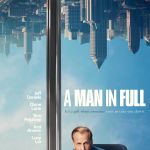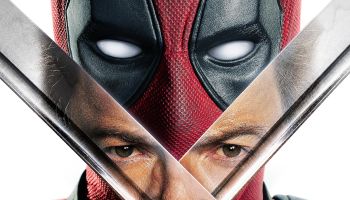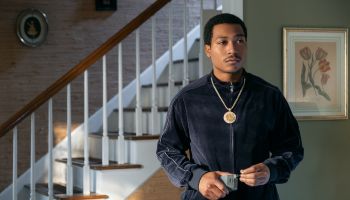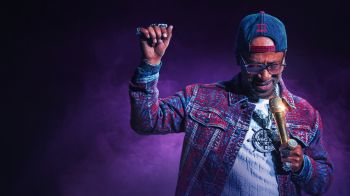“F*ck the police coming straight from the underground/A young nigga got it bad cause I’m brown/And not the other color so police think/They have the authority to kill a minority” – Ice Cube 1988
If the unwarranted death or torture of many brown men and the musical narratives delivered by black artists is any indication, the volatile relationship between police and minorities is not neoteric in nature.
The disenfranchisement and victimization of black communities has historically been confederated with both government and paramilitary forces – the latter being an obvious enforcer of a system that has been carefully designed to destabilize these communities in the most passive, lawful (but unmitigated) of ways.
It’s a centuries old dependency; a black man, only three fourths of a human, isn’t important enough to be protected. He is deemed a threat that must be minimized. As a result, he is acceptably tortured by society, so much so that the mothers and fathers of black boys have instilled a different type of adolescent lesson in their nurturing – how to ensure you stay alive while interacting with police.
And sadly, we can confirm that relationship is true with the blood of many black men dating back hundreds of years ago, up to the 1997 torture of Abner Louiama, or the 2013 killing of Jonathan Ferrell, a former FAMU football player who was shot 10 times as he was seeking help after a car crash. [In January 2014, a grand jury decided not to indict Officer Randall Kerrick for the shooting of Ferrell, citing lack of evidence]
But even those incidents have not painted a picture for society that’s loud enough to be validated. It took a polarizing West Coast group called N.W.A. to make that message clear. F*ck the police. We can’t take it anymore.
It took the infamous James Brown refrain turned rap hook in Public Enemy’s “Fight the Power” — a less overt but equally powerful call to action when compared to N.W.A’s “FTP” — to obviate complacency in post-civil rights America, where the deployment of underhand systematic racism trumped the segregation of the 60’s.
No we’re not the same/Cause we don’t know the game/What we need is awareness, we can’t get careless – Public Enemy 1989
When the musical theme was paired with Spike Lee’s esoteric classic Do The Right Thing, it was clear that the issue of police brutality and a fear of paramilitary forces belong to the black community alone. The death of Radio Raheem wasn’t isolated — it was the same narrative of N.W.A, Public Enemy, KRS-One and black men across America.
And with that form of black art, rappers have been able to vocalize the silenced, and though controversial, the response has always been tremendous. For the first time since the civil rights movements, black people were able to push back and globalize these sentiments. And that thematic consistency can still be identified in today’s rap music, if only occasionally.
Unfortunately, no matter how powerful and unremitting that form of art is, this systematic oppression it tries so hard to oust is still deeply rooted and still taking lives. But one man’s hope to employ hip-hop to bring awareness to the protection of law enforcement and the disenfranchisement of black people again might change that.
God willing.
*****************************************************
On a chilly November day in 2011, a 68-year-old man with a chronic heart problem inadvertently triggered the Life Aid medical alert necklace worn around his neck. As is protocol, a system operator came on the loudspeaker in his White Plains, NY apartment to ask if he was okay. There was no answer.
In a matter of minutes, patrol cars from the Westchester County White Plains Police Department and an ambulance were en route to the apartment at the Winbrook Houses. Five officers approached the door, knocked, and were met with Kenneth Chamberlain’s voice. He assured the officers that he was fine, that the trigger was an accident and they could go on their way.
But the officers didn’t let up. They banged on the door, demanding that Chamberlain open it, although he insisted he was in good health. Later, a niece who lived in the building would tell the New York Times that she heard her uncle’s voice, full of fear, asking the police why they had their guns drawn.
“He was begging them to leave him alone,” she said. “I heard my uncle yelling, ‘Officers, officers, why do you have your guns out?’ ”
His son would tell GlobalGrind that at least one of the five officers could be heard on the recording, taken by the alert system in his home, calling his father a “nigger” and taunting the former Marine with loud shouts of “hoo-rah.”
And a scared Chamberlain, aware of what weight that racial slur held, aware of the terror that men in blue suits and shiny black boots wage on men like him, aware of the levy placed on his life because of the color of his skin, refused to open the door.
It didn’t matter. They forced themselves inside and fired a Taser in his direction to disable the 68-year-old. Then, an officer, who would later claim he saw Chamberlain grab a knife, fired his gun. Mr. Chamberlain, a 20-year veteran of the Westchester County Department of Corrections, lay dead on the floor, two bullet holes to his chest and a host of unanswered questions pooling in the blood around him.
His son, Kenneth Chamberlain Jr., received a call from a family friend about the shooting.
“I dropped my phone and put on some clothes and hurried to my fathers apartment building where I asked an officer did they shoot my father and they told me to go to White Plains hospital,” Chamberlain said.
“Upon my arrival they took me in a private room and about a half hour later a doctor came out and told me that my father had expired. I asked could I see my dad and the doctor escorted me to the area in the emergency room where he was working on my father and I saw him lying there with his eyes open his tongue hanging out his mouth and a bullet hole in him.”
Chamberlain relayed that story in June 2013 during his campaign to see how he could partner with hip-hop juggernauts and spark the musical and artistic activism that American witnessed in the late 1980’s. For him, the power of accurate, truthful and compelling storytelling about a taboo subject in America could be the agent for change — especially in this age of mainstream hip-hop.
It was a story I’ve reported over the years, one of those events that affirms your fear in law enforcement, but falls under the category of an unfortunate re occurrence in Black America’s history that we just don’t know how yet to break.
It’s a story that elicits the fear in this video, released just last month, of a young black male pleading with an officer not to shoot him while trying to understand why he was being placed under arrest:
And because of that, I could already hear the bureaucratic chains that allow officers to shoot first and claim self-defense, to deny the presence of profiling or racism that enables the justification of their brutal force to work. The clang was deafening…unmistakable. I knew how this story ended.
The officer who pulled the trigger, Chamberlain would tell me, is still in the line of duty. He was still on the streets of New York. [As of January 2014, the officer who allegedly used the racial slur was fired, however, the police department refused to confirm the grounds for his termination. The officer who pulled the trigger avoided any charges in the death of Chamberlain]
The investigation that followed the shooting answered very little, coagulating that pool of questions into one explanation about self-defense and protocol and a grand jury – formed an entire year after Chamberlain’s death –that decided not to indict the officers. Which, in the end, didn’t answer any of the Chamberlain family’s inquiries, except one about the racial epithet thrown at Mr. Chamberlain before he was pumped with bullets.
“Westchester County District Attorney Janet DiFiore was even asked about the racial slur that was hurled at my father moments before his death, and although she admitted that they did call him a ‘nigger’ she said that it was used as a tactic to distract my father,” said Chamberlain.
“I mean, I have never in my life heard of a racial slur being used to distract anyone. So yes, I did lose faith in our justice system because regardless of fact that I believe there are two different types of justice systems – one for blacks and Latinos and one for whites – and the fact that when the majority of these laws were put in place blacks were still considered three fourths of a person I still wanted to believe that the D.A. would do the right thing.”
It was, in a sense, the newest addition to the tales of black folk – the power of paramilitary with shiny badges, the value of black lives, the systematic oppression that is the judicial journey designed to perpetuate disenfranchisement. Mr. Chamberlain’s story joined the ranks with Amadou Diallo, Rodney King, and countless others who are killed or maimed by the same people who are appointed to protect them.
I heard Mr. Chamberlain’s story again last summer when I learned of the mistrial that set a Detroit officer free after he shot 7-year-old Aiyana Jones. And most recently, I imagined the fear Mr. Chamberlain felt when news broke of the savage shooting of Jonathan Ferrell, a 24-year-old former FAMU football player who was riddled with 10 bullets as he was seeking help from law enforcement after he crashed his car in a ditch.
As of May 2014, Chamberlain and his attorneys are awaiting a decision from the Department of Justice but plan to move forward with a civil case.
And on May 5th, the team will visit the Westchester County Office Building in White Plains, New York to present a proposal to the Westchester County Board of Legislators outlining police reform objectives.
“Some of our request include but are not limited to independent prosecutors in questionable police shootings, oversight body such as a civilian complaint review board with subpoena power, reevaluating and reforming the training programs at the Police Academy, and centralizing in-service training and expanding the use of Crisis Intervention Teams which the County cut some time ago,” said Chamberlain.
You can read the complete list below:
WESTCHESTER OBJECTIVES:
- Explore the feasibility of establishing independent oversight structures with subpoena power in order to review the policies and practices of law enforcement agencies, to investigate cases of police misconduct, and to impose sanctions.
- Implement clear and current protocols within all police departments addressing the use of force continuum, as well as proper handling of emotionally troubled individuals, with an emphasis on deescalating confrontations without resorting to violence.
- Make available to the public the rules and regulations of all police agencies.
- Review and reform the training program of the Westchester Police Academy, with particular focus on proper means to deescalate situations through non-violent methods.
- Centralize in-service police training to encourage sharing of best practices and reduce financial costs.
- Increase outreach efforts to recruit from a diverse officer applicant pool, so that police departments more accurately reflect the communities they serves.
- Reassess promotion policy in order to advance more African-American and Latino officers into positions of leadership.
STATE OBJECTIVES:
- Establish a special prosecutor to investigate and discipline police misconduct.
- Require that all police interrogations be recorded.
- Prohibit custodial arrests for violations – arrests where an officer has discretion to issue a summons or arrest an individual.
- Close the loophole that treats possession of small amounts of marijuana differently depending on whether or not it is in public view – a citation versus a misdemeanor.
But Chamberlain, who lost his father in the most unjust way, knows there’s never enough you can do to gain justice. He’ll never forget it.
“I couldn’t describe what I felt the day my father was killed other than to say a part of me died right there along with him and all I wanted to know was how could this have happened and what could he have done to make them kill him.”
Now, his goal to is figure out — with the help of activists and the hip hop community — how to prevent it from happening again.
“We’ve got to fight the powers that be.”
PHOTO CREDIT: Chamberlain Family

















